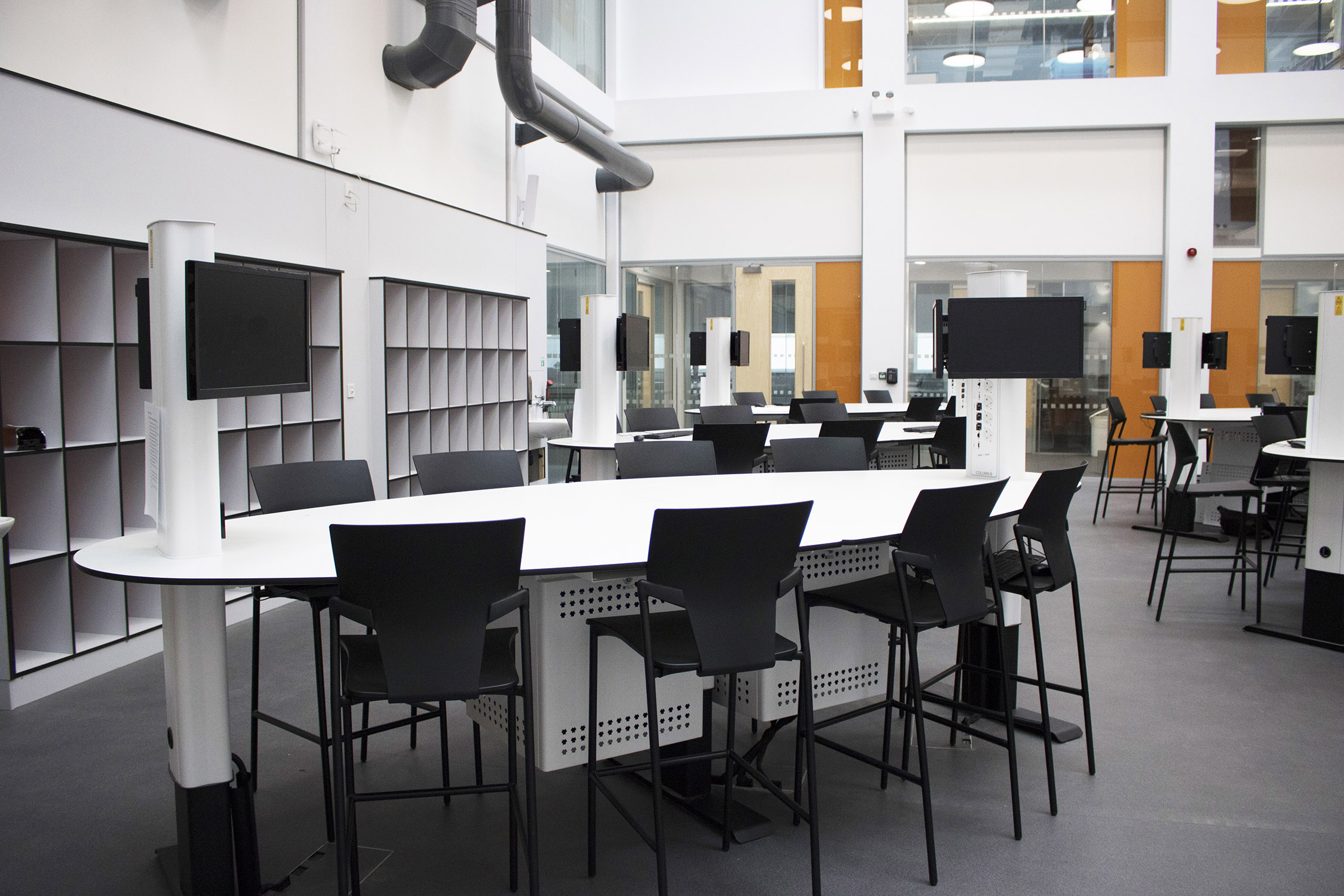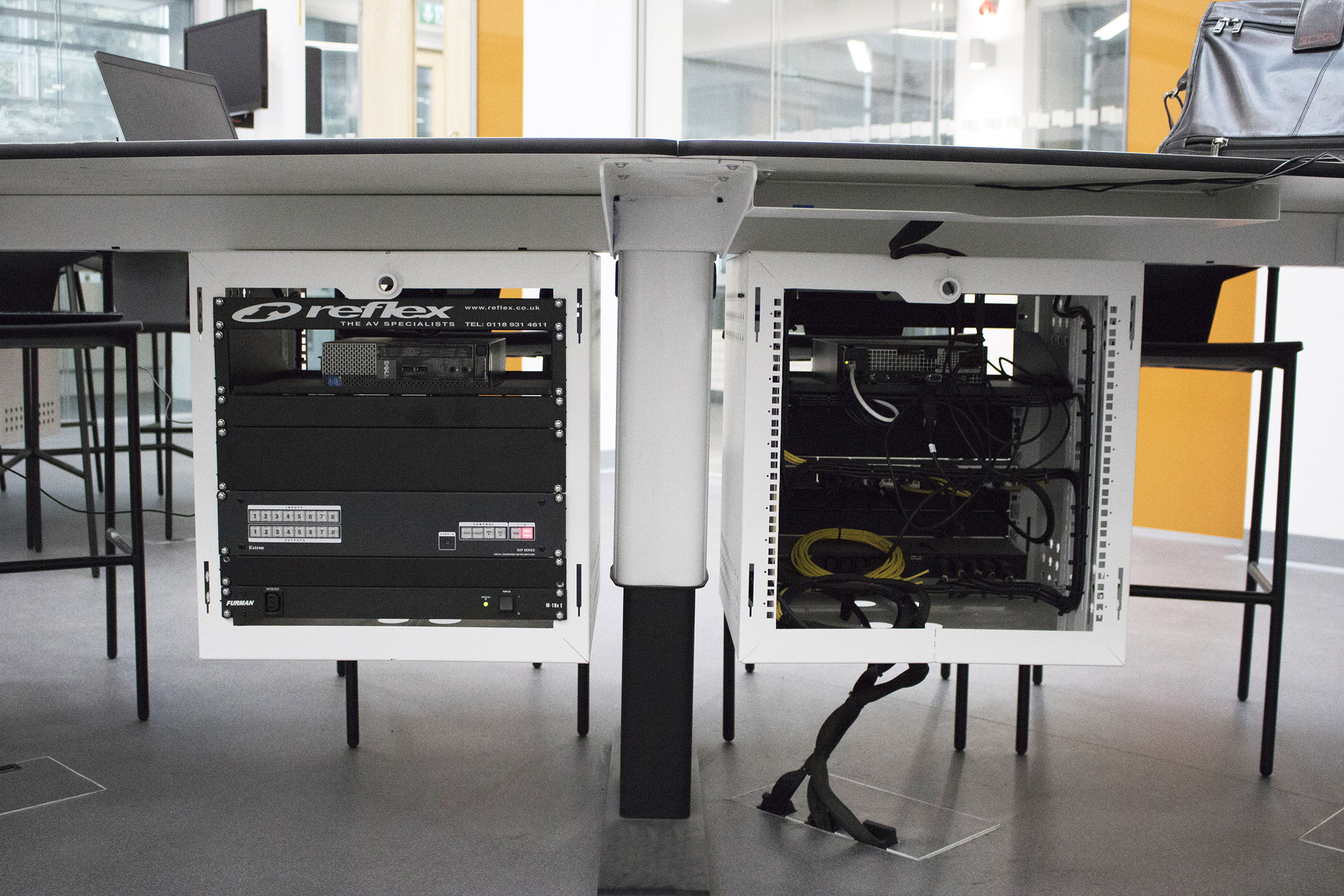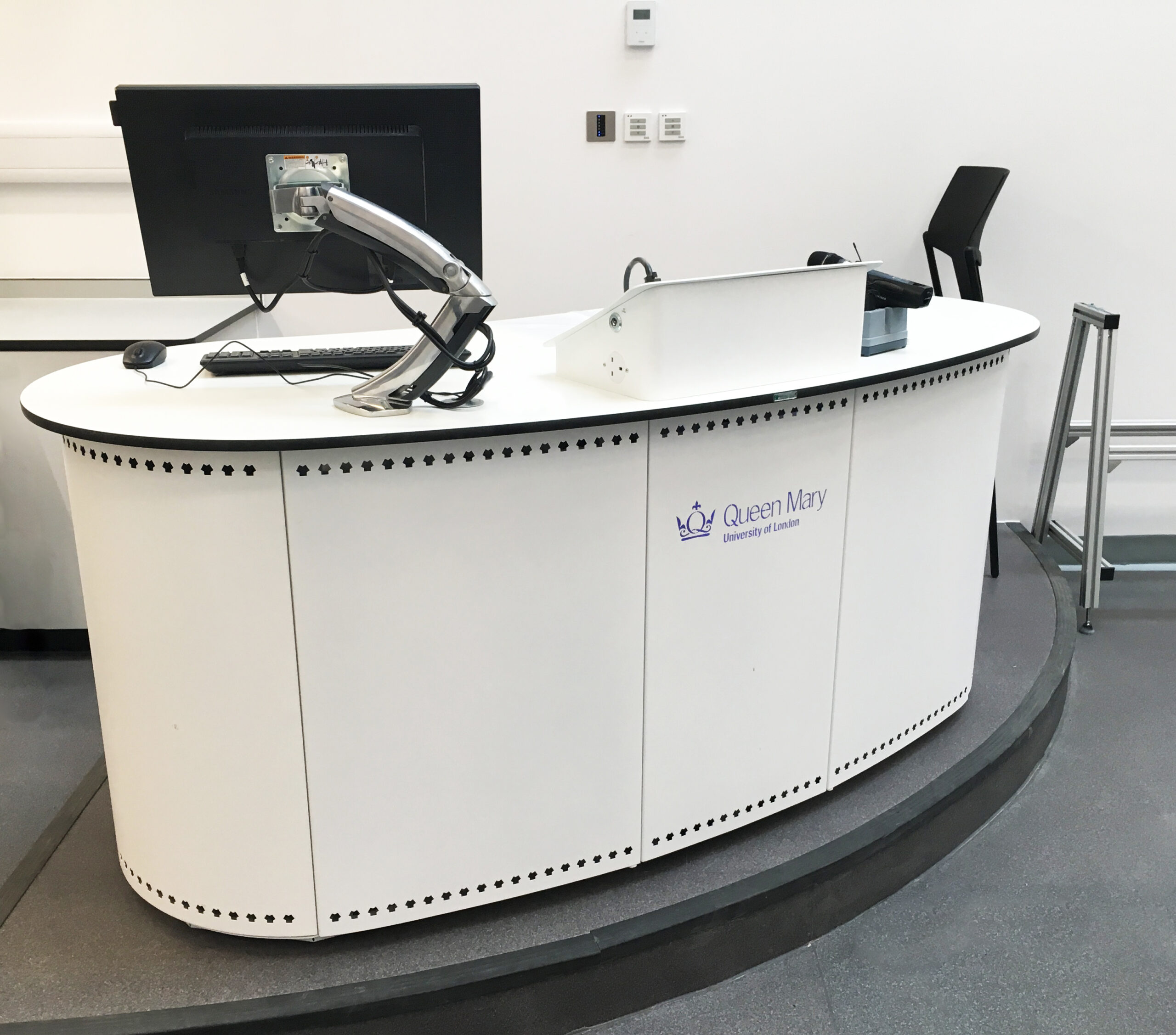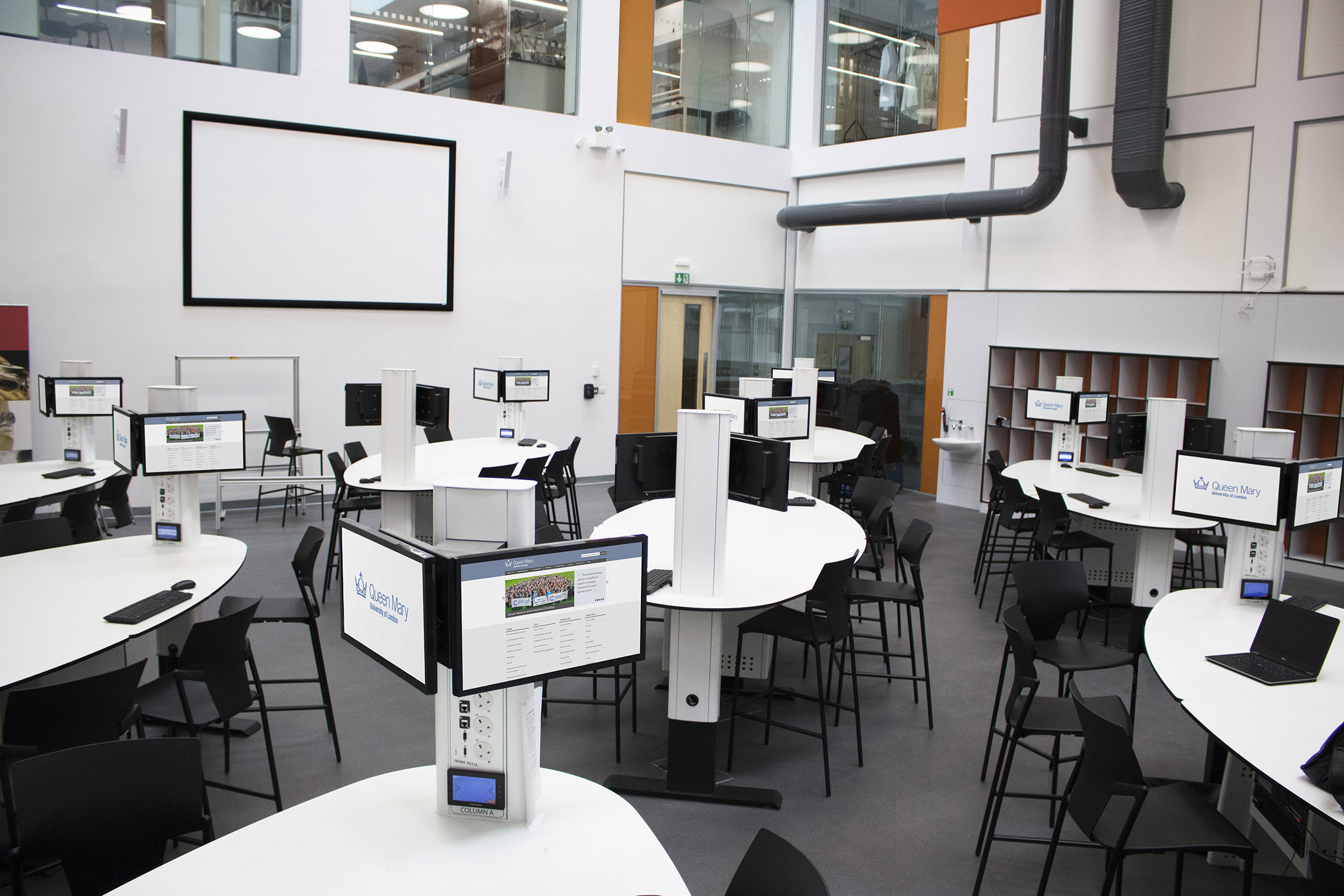Queen Mary University of London
Deploying a comprehensive furniture and audio visual solution to create engaging collaborative spaces at QMUL’s Engineering Laboratory
Background
The Engineering Laboratory at Queen Mary University London (QMUL) was traditionally an open plan area with research rooms, where students get ‘hands on’ with hand tools, glue guns and various mechanicals to perform module-based workshop projects. An additional ground floor teaching area, G27 opened out onto corridors which created some practical issues in their use.
The space was equipped with standard tables and chairs, with projects scheduled to run common tests for the whole class. QMUL felt the whole area created constraints for students, teaching associates and lecturers and decided to investigate how the space could be better used.
The Brief
Essentially the G27 teaching space on the ground floor is an analytical lab, but the University was looking for it to become multifunctional and to meet the needs of different disciplines within the faculty. Flexibility was needed to accommodate various setups such as mechanical jigs, fluid beds or micro steam engines, and exercises where variable data is input to test beds and frames and also made available for group collaboration.
The vision for G27 was to maximise the use of furniture and technology to deliver a state of the art laboratory experience that was focused on collaboration, communications, connectivity and real-time data collection for individuals, group and class active learning.
The Solution
In order to create a collaboration area, eight Dalen collaborative desks were designed at a fixed height along with one height adjustable desk of the same style. Each desk allows for eight seats, four along each side. The worktop was intelligently designed to feature a rounded oval shape, which removes the ‘dead space’ on the original rectangular worktop. This oval shape gives a clear line of sight to the screens and other team members, without losing any capability.
The desktop surface is in a hard wearing white Trespa finish with a white finished steel frame and black base. Each desk is equipped with four monitors mounted to the columns, two per column. And each column is designed for connectivity with 4x UK power sockets, 2x HDMI auxiliary inputs with embedded audio, 1x USB and 2x LAN ports.
Eight stools with a black matt finished frame and black plastic seat surround each standing desk, providing the students with an option to stand when working – a move proven to increase productivity. Eight additional stools were included for the dedicated client supplied engineering desk.
The whole space that was previously open to corridors now has glass dividers. With hanging sound baffles to minimise noise pollution and reverberation, helps create a quiet room with a better ambiance for collaborative work.
Integrator Reflex collaborated on the conceptual desk design and was engaged to supply, install and design the AV solution that included one dedicated column on each desk, equipped with a Crestron 5” touch panel for local desk control/ setup.
An extra LAN connector accommodates the network camera streaming port and beneath each desktop, the necessary hardware concealed in two dedicated 10RU fitted racks allows each desk to independently communicate with the master.
A keyboard and mouse for each PC is held in an underside cradle, with a cable-way to the working surface. With four keyboard cradles in total, another two additional PCs can be added as needed. All integrated system cables are concealed within the desk to keep them hidden from view.
For the lecturer, a Dalen (TOP-TEC) Contour Duplex lectern is equipped with a desktop monitor mounted on an ergo arm. The lectern surface includes a Crestron TST 600 wireless control panel with an integrated input plate and a microphone charging docking station.
The system design for each collaborative desk allows any PC or HDMI auxiliary input to be displayed on any monitor, in any given combination. The desk configuration and setup can be controlled from the local touch panel which is mounted on the display column, or from the front of room Contour lectern wireless touch panel.
From the lectern, the lecturer can use the wireless touch panel to select a source to be displayed on the desktop monitor and can stream the content to the collaborative desks or the data projector.
The solution also includes a wireless audio broadcast system, which allows users to wear in-ear headphones and receiver packs to listen to the audio from their local source and the lecturer’s voice audio. A 22” monitor shared between two users, gives the ability to view their local computer or auxiliary input source device. Four wall mounted Audac AXIR column loudspeakers can be used to address the entire group of students.


The Result
The Engineering Laboratory has become a showcase room for QMUL and has delivered benefits beyond the initial expectations, as well as influencing other facilities in the University. The multi-use space now lends itself to a variety of uses and is being used by external resources.
Key Features of Contour Lectern
- Designed to securely house AV equipment
- Available with 16U or 32U rack space for storage
- Innovative rack unit that allows non-rack mounted equipment to be secured within the space
Key Features of Collaborative tables:
- Ergonomically designed with the option to sit or stand
- Fully AV integrated solution
- Bespoke table shape to increase student interaction and to support collaboration activities
- Dual screen use at either end of table




